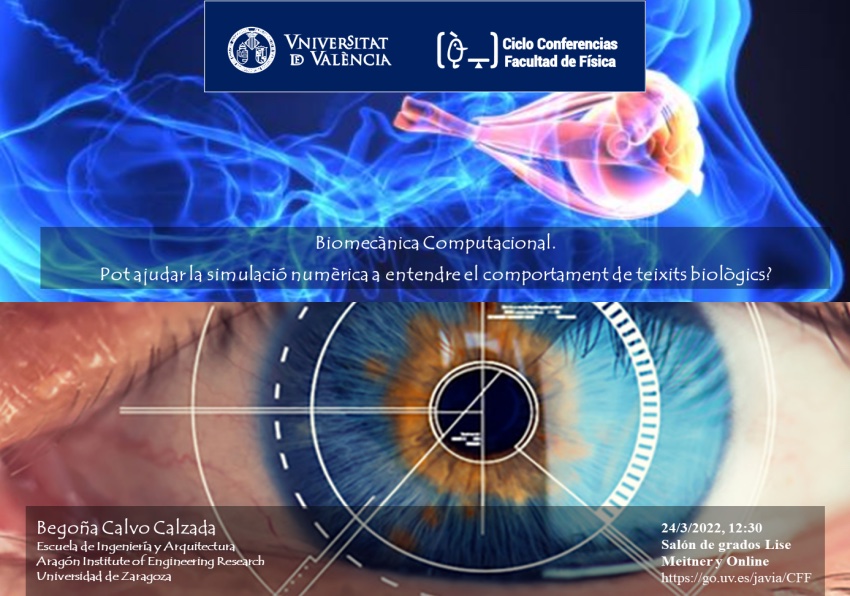
Speaker: Begoña Calvo (Engineering and Architecture School and Aragón Institute of Engineering Research, University of Zaragoza)
Summary:
The increase in life expectancy has brought with it a growing demand for new diagnostic equipment, the design of medical instruments, the design of prostheses or devices, etc. This has given rise to new training and research requirements that combine medical and engineering aspects, giving rise to a new discipline such as bioengineering. Within the wide range of applications that comprise it, biomechanics is known as the discipline that proposes the application of mechanics to biology in an attempt to predict the mechanics of living beings. It therefore helps to understand the motor functioning of organisms, to characterise the behaviour of living tissues and organs from a structural point of view, to predict the changes that tissues undergo due to different alterations and to propose methods of artificial intervention. Biomechanics research activities are mainly carried out in three areas: theoretical, experimental and computational. The high cost of experimentation and the impossibility of customising it, together with the accelerated development of computers in terms of power, speed, versatility, graphic visualisation, artificial intelligence, etc., have led to the growing importance of Computational Biomechanics.
Finite Element modelling and analysis is a very attractive tool in Bioengineering. This has been possible thanks to different factors, for example: the strong technological advance in the acquisition of medical images, the increase in computer performance, the formulation of behavioural models that faithfully reproduce the physics of the problem, the improvement in experimental techniques to characterise the parameters of these models and their subsequent validation. Finite element models provide us with useful information for clinical diagnosis, pre-operative planning and the design of clinical devices or prostheses. For example, a finite element model of the crystalline lens will allow us to evaluate how the properties of the nucleus and cortex tissues influence accommodation, or to study the stability of an intraocular lens inside the capsular sac after cataract surgery.
Date 24 march 2022 at 12:30 to 14:00. Thursday.
Lise Meitner Hall. Faculty of Physics
Faculty of Physics Conference Cycle.
https://www.uv.es/uvweb/fisica/es/ciclo-conferencias/curso-2021-2022-1286215806814.html
Contact maria.a.tortola@uv.es






